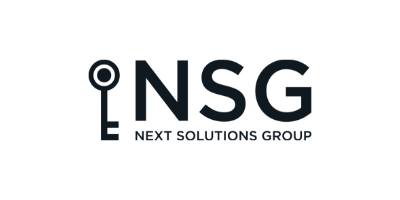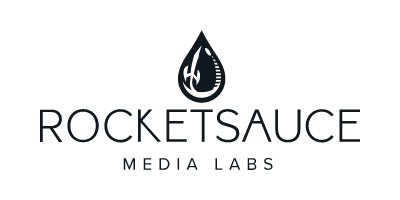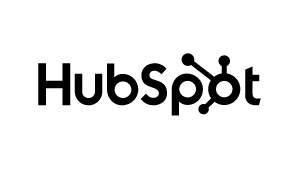Over the past decade, beyond the push for data warehousing and vanity metrics, enterprise brands have been searching for customer intelligence that improves media performance, personalizes experiences, and drives revenue growth. In 2024, this will be an urgent priority as data deprecation and artificial intelligence reshape how we search for information, make decisions, and engage in digital commerce.
At Brain+Trust, we closely monitor new technologies and trends to ensure every client has the best-fit business software, hardware, and services for operational confidence and future readiness. We also note other analyst reports and this week allowed us to review the Gartner Magic Quadrant for Customer Data Platforms.
We respect enterprise technologies’ business and technical dimensions, and master data management is rightfully the primary concern for most businesses today. When evaluating customer data platforms, we employ a comprehensive view that considers not just their vertical industry applications, operational features, and capabilities but also factors like total cost of ownership, security, scalability, and readiness for applied AI
Back to Gartner’s Magic Quadrant for Customer Data Platforms, one of the most closely watched reports in the martech space, a rigorous, methodical approach to evaluating such critical technology.
The release of this latest MQ coincides with accelerated advancements in deep learning and generative intelligence. It is encouraging to see customer data platforms gaining adoption as key tech infrastructure, as we expect seismic changes from Apple and Google later this year (finally!). The leaders identified in the report – including Salesforce, Treasure Data, Tealium, and Adobe – excel both on completeness of vision and ability to execute, as Gartner sees it.
Brain+Trust thoughts on Gartner’s report:
-
While it is no surprise to see Adobe, Oracle, Salesforce, and SAP in a field like this, each vendor has proven slow with enterprise innovation and often leaves customers locked into the vendor’s ecosystem of tools and other services. This may prove challenging as brands call for more agility and experimentation with AI services.
-
High-growth organizations mustn’t view CDPs as point solutions but as enterprise data hubs enabling personalization, loyalty, and all flavors of speed and efficiency. Partnering early with a long-term-focused CDP vendor brings major advantages and should show adherence to iterative performance improvement and future readiness.
-
With privacy regulations intensifying (consider current FTC rules and more than a dozen US State data privacy laws in effect by July 2024), CDPs that centrally unify consent and preferences while securely activating data provide pivotal assurance to CFOs and general counsel. Everyone needs a good night’s sleep.
-
CDP vendors lacking robust identity resolution and governance capabilities will surely fall behind. Over the past four years, we have had several clients using platforms included in this MQ report that were still required to employ a master data management (MDM) platform to achieve a 360-degree customer view. Success today requires resolving information on an individual customer record, account-based profiles, and “joint” household customers. Few CDPs are that finite at present.
-
Integration remains a challenge for many CDPs. Seamless connections with other martech and bi-directional data sharing are necessary as tech stacks grow increasingly interconnected and there is more cadence in switching or replacing tools.
-
The line between CDPs, CRMs, and marketing clouds is blurring. As CDPs move upmarket into enterprise-grade capabilities, we expect to see AI and AI agents only hastening further consolidation ahead.
At Brain+Trust, we are most familiar with Treasure Data, and we see several unique strengths that position them for near-term growth and long-term success:
-
The breadth of integrations: Treasure Data boasts many out-of-the-box integrations with contact center systems, marketing, and analytics tools. This enables faster time-to-value by accelerating the customer data connectivity essential for unified profiles and correlated audience segmentation.
-
Enterprise scalability: With years of proof serving high-scale enterprise accounts, Treasure Data’s CDP has proven adept at handling immense data volumes of all types and velocities. This establishes confidence for complex, growing deployments, including applied AI tools and automation.
-
Compliance capabilities: As privacy regulations expand globally, Treasure Data invested early in consent, data residencies, and governance toolings like redaction and encryption. This helps minimize regulatory exposure and risk at a time when artificial intelligence is
-
An open ecosystem: While Salesforce, SAP, and Oracle heavily optimize for their respective cloud universe, Treasure Data maintains an open connector framework that embraces 250+ marketing, analytics, and infrastructure tools. This averts vendor lock-in and provides peace of mind to select best-fit systems.
-
True omnichannel reach: Via acquisitions, funding, and partnerships, Treasure Data has been thinking ahead of the curve on customer experience innovations — especially across emerging channels, which today include connected television, smart home devices and tools, and connected mobility (vehicles and wearables, oh my!).
-
Archetypical precision: Treasure Data enriches profiles with predictive model-based personas going far beyond firmographic fits. This allows more granular segmentation for high-fidelity messaging relevance.
-
Pricing structure: Unlike most CDPs charging per profile volume, Treasure Data licenses by ingestion volume. This shifts costs to better align with usage, a welcome change for data-intensive organizations, allowing budgets to scale directly with growth.
-
Faster innovation cycle: On average, Treasure Data rolls out major feature upgrades every two weeks based on client feedback and ideas. Less procedural than most other CDPs and assuring users of future readiness, this lightning-fast innovation pairs well with strong technical architecture and pricing models that better accommodate unpredictable business growth and change scenarios.
-
Greater data accessibility: Treasure Data built its workspaces and schema to ensure that analytics and data science teams have self-serve customer data access with familiar tooling, which is also critically required for contemporary applied AI services.
-
An exciting roadmap: Announcements made at CDP World 2023 indicate strong alignment with market trends around customer journey orchestration, real-time API calls, and predictive/”next-best action” automation.
Throughout 2024, it will be obvious which brands are not employing a CDP on the front line of customer experience and marketing operations, as seen in poor ratings, negative reviews, and lackluster earnings calls.
This isn’t the last word we’ll have on CDPs or Gartner’s rank and stack of the category. Just like the speed of change we’ve seen with AI, we can expect major changes in data management over the coming months.
Are you and your data ready for what’s next?










